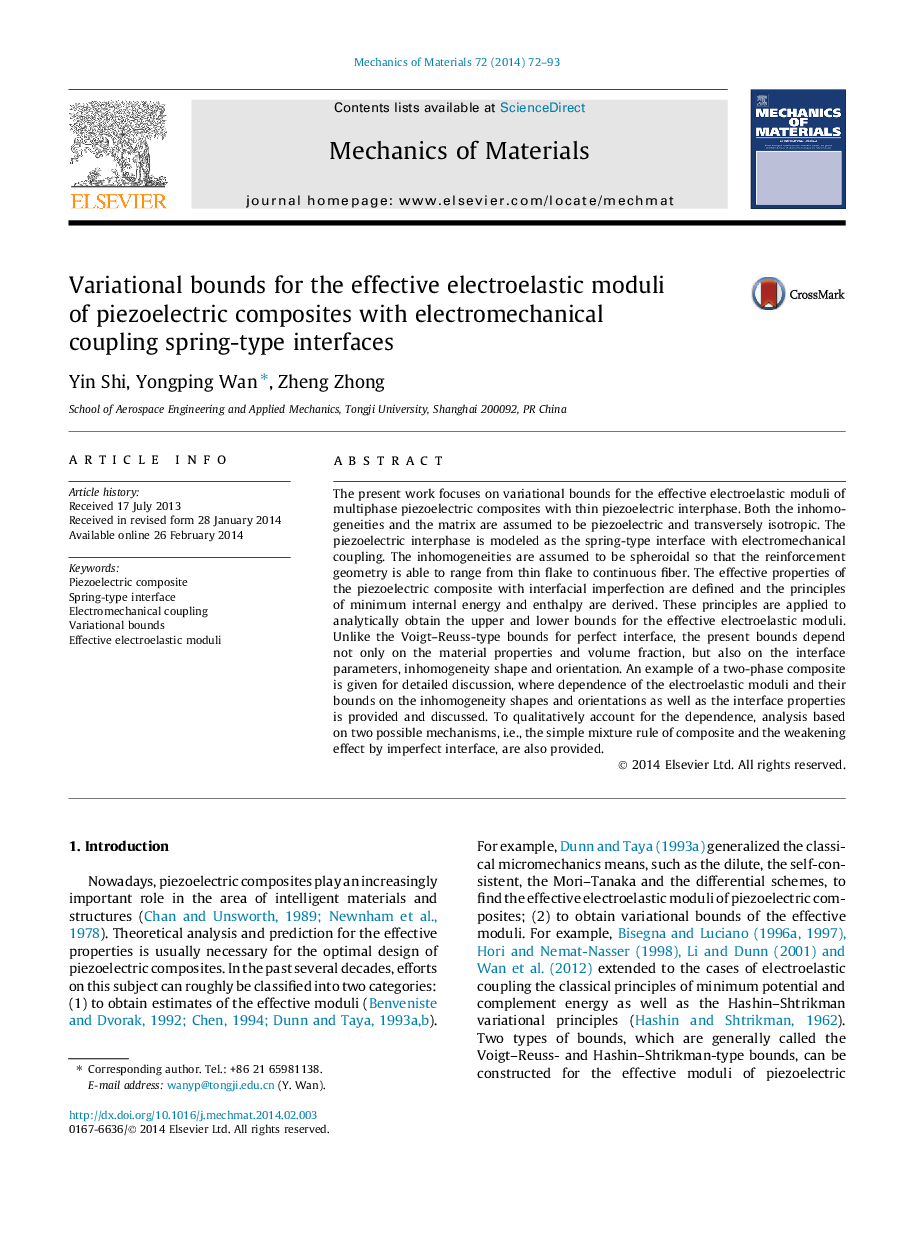| Article ID | Journal | Published Year | Pages | File Type |
|---|---|---|---|---|
| 799774 | Mechanics of Materials | 2014 | 22 Pages |
•Bounds for overall moduli are developed for piezoelectrics with imperfect interfaces.•The electromechanical coupling spring-type interface is considered.•Derivation is based on general spheroidal shape of interface/inhomogeneities.•Effects of interface property, shape and orientation of inhomogeneities are discussed.
The present work focuses on variational bounds for the effective electroelastic moduli of multiphase piezoelectric composites with thin piezoelectric interphase. Both the inhomogeneities and the matrix are assumed to be piezoelectric and transversely isotropic. The piezoelectric interphase is modeled as the spring-type interface with electromechanical coupling. The inhomogeneities are assumed to be spheroidal so that the reinforcement geometry is able to range from thin flake to continuous fiber. The effective properties of the piezoelectric composite with interfacial imperfection are defined and the principles of minimum internal energy and enthalpy are derived. These principles are applied to analytically obtain the upper and lower bounds for the effective electroelastic moduli. Unlike the Voigt–Reuss-type bounds for perfect interface, the present bounds depend not only on the material properties and volume fraction, but also on the interface parameters, inhomogeneity shape and orientation. An example of a two-phase composite is given for detailed discussion, where dependence of the electroelastic moduli and their bounds on the inhomogeneity shapes and orientations as well as the interface properties is provided and discussed. To qualitatively account for the dependence, analysis based on two possible mechanisms, i.e., the simple mixture rule of composite and the weakening effect by imperfect interface, are also provided.
